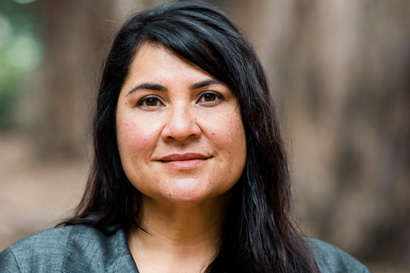The Howard Hughes Medical Institute (HHMI), the nation’s largest biomedical research foundation, announced today the appointment of 33 American scientists as investigators, and three of them are from the University of California, Berkeley.
The honor is a big deal for research scientists. Each new investigator receives roughly $9 million over a seven-year period; the amount is renewable pending a successful scientific review of the researcher’s work. The investigators maintain their faculty positions at their home universities or research institutions, but their salaries are paid by HHMI. There are now about 250 HHMI investigators around the U.S., and 22 of them are at UC Berkeley.
The new investigators are Greg Barton, Diana Bautista and David Savage, all professors of molecular and cell biology. They were selected from more than 800 eligible applicants.
“HHMI is committed to giving outstanding biomedical scientists the time, resources and freedom they need to explore uncharted scientific territory,” said HHMI President Erin O’Shea.
By employing scientists as HHMI Investigators, rather than by awarding them research grants, she said, the institute is guided by the principle of “people, not projects.”
Distinguishing friend from foe

Barton, an immunologist, studies how the immune system distinguishes friend from foe, focusing on how the innate immune system recognizes microbes and how the innate and adaptive immune systems work together.
His team has discovered genes and molecular processes that allow the immune system to distinguish between the genetic material of pathogens and our own, and showed how breakdowns in these mechanisms lead to attacks on the body’s cells. Barton has also identified gut bacteria that trigger the immune system and is learning from them how the immune system knows whether a microbe is harmful.
“Our ultimate goal is to leverage our discoveries … for therapeutic benefit,” Barton said, noting that certain gut microbes might one day be harnessed to boost immunity. A better understanding of autoimmunity could also spark new treatments for immune disorders.
Inflammation and itch

Bautista, a cell and molecular neurobiologist, is focused on untangling the complex cellular and molecular interactions that contribute to chronic inflammation, where the nervous and immune systems are doing more harm than good.
Bautista first tackled this issue in eczema, a chronic itch disorder. She found that a signaling molecule released by epithelial skin cells directly activates immune cells and the nervous system. Neurons send out inflammatory signals that make eczema flare up, her lab showed. Her team then looked at airway neurons and lung epithelial cells, since many children with eczema go on to develop asthma and allergies, and found similar neuronal signaling in those cells.
When the pandemic hit in 2020, Bautista’s lab began to research the new threat, because COVID-19 can also cause deadly lung inflammation.
“As a woman of color, with a diverse group of trainees in my lab, we felt firsthand the disparities of COVID-19 in our own families and communities,” said Bautista.
By looking at cellular-level changes that take place between infection and the time breathing problems develop, she hopes to untangle the ways SARS-CoV-2 impacts the nervous system and triggers inflammation.
Boosting crop yields

After spending the last decade studying what makes cyanobacteria so efficient at concentrating carbon dioxide molecules into compartments called carboxysomes for use in photosynthesis, Savage is now working to install this compartment into crop plants to enhance their photosynthetic abilities. This could allow farmers to harvest more from crops using less land.
Savage, a biochemist, and his colleagues discovered that nearly 20 genes play a role in manufacturing a functional carboxysome. The team has also figured out how to transfer this molecular machinery from one bacterial species to another that lacks it. It was able to transform Escherichia coli bacteria so that they captured carbon dioxide from the air to fuel growth. This work is a first in the field and “lays the groundwork for moving these components into plants,” he said.
The task isn’t straightforward. It requires turning a plant’s chloroplast, the compartment that houses its photosynthetic machinery, into a carboxysome by swapping out some chloroplast genes for carboxysome genes. Because every plant cell contains up to 100 chloroplasts, each with multiple genomes, such an engineering feat is challenging. Savage and his team are now deploying sophisticated genome editing tools to tackle the problem.
Thinking in new ways
The HHMI selected the new investigators because they’re thoughtful, rigorous scientists who have the potential to make transformative discoveries over time, said David Clapham, HHMI’s vice president and chief scientific officer.
“We encourage Investigators to follow new directions, learn new methods and think in new ways,” he said. “This could lead to scientific breakthroughs that benefit humanity.”
To date, 32 current or former HHMI scientists have won the Nobel Prize – most recently, UC Berkeley’s Jennifer Doudna in 2020 for the development of a method for genome editing. Investigators have made significant contributions across many research areas, including HIV vaccine development, microbiome and circadian rhythm research, immunotherapy, SARS-CoV-2 biology, and potential therapies and vaccines for COVID-19.
This story was reposted from Berkeley News. Read more here.